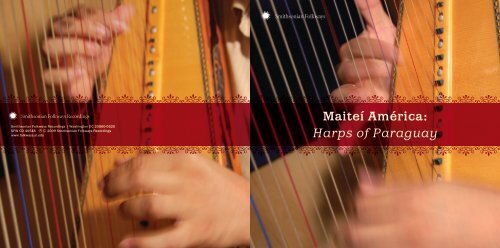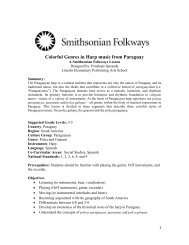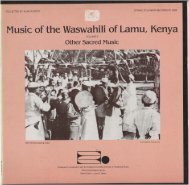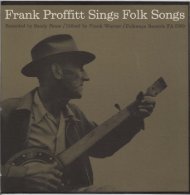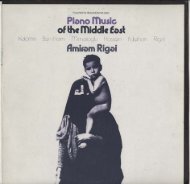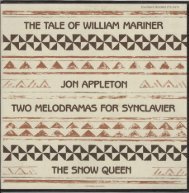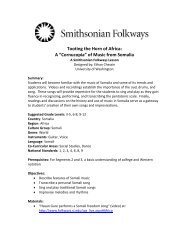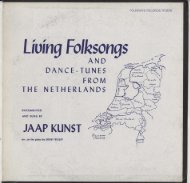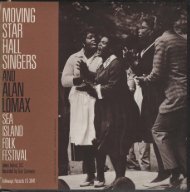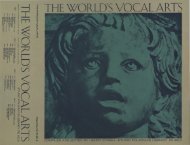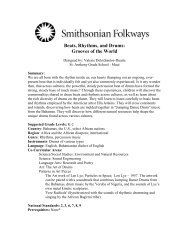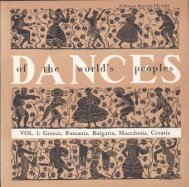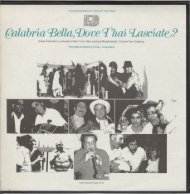Maiteí América: Harps of Paraguay
Maiteí América: Harps of Paraguay
Maiteí América: Harps of Paraguay
Create successful ePaper yourself
Turn your PDF publications into a flip-book with our unique Google optimized e-Paper software.
Smithsonian Folkways Recordings | Washington DC 20560-0520<br />
SFW CD 40548 P C 2009 Smithsonian Folkways Recordings<br />
www.folkways.si.edu<br />
<strong>Maiteí</strong> <strong>América</strong>:<br />
<strong>Harps</strong> <strong>of</strong> <strong>Paraguay</strong><br />
1 2
1. Llegada (Arrival) 3:40<br />
(Félix Pérez Cardozo / SADAIC Latin Copyrights Inc., APA)<br />
2. Piririta (Piririta) 3:57<br />
(Félix Pérez Cardozo / SADAIC Latin Copyrights Inc., APA)<br />
3. Isla Saká (Isla Saká) 3:25<br />
(Santiago Cortesi / SADAIC Latin Copyrights Inc., APA)<br />
4. Cajita de arpa / Sueño de Angelita (Little Harp Music Box / Angelita’s Dream) 2:56<br />
(Santiago Cortesi / Félix Pérez Cardozo / SADAIC Latin Copyrights Inc., APA)<br />
5. Ykuá Potrero (Ykuá Potrero) 2:09<br />
(Lorenzo Leguizamón, APA)<br />
6. Tres de mayo (The Third <strong>of</strong> May) 3:07<br />
(Julián Alarcón / SADAIC Latin Copyrights Inc., APA)<br />
7. Tren lechero (The Milk Train) 4:39<br />
(Félix Pérez Cardozo / SADAIC Latin Copyrights Inc., APA)<br />
8. Jeroky popó (Vivacious Dance) 2:35<br />
(Herminio Giménez / SADAIC Latin Copyrights Inc., APA)<br />
9. Pájaro campana (The Bell Bird) 4:02<br />
(arr. Félix Pérez Cardozo / SADAIC Latin Copyrights Inc., APA)<br />
10. Caturí Abente (Caturí Abente) 3:04<br />
(Prudencio Giménez / SADAIC Latin Copyrights Inc., APA)<br />
11. Coronel Martínez (Coronel Martínez) 2:52<br />
(Félix Pérez Cardozo / SADAIC Latin Copyrights Inc., APA)<br />
3<br />
<strong>Maiteí</strong> <strong>América</strong>: <strong>Harps</strong> <strong>of</strong> <strong>Paraguay</strong><br />
12. Paraguarí (Paraguarí) 2:40<br />
13. Ángela Rosa (Ángela Rosa) 3:00<br />
(Félix Pérez Cardozo / Latin American Music Co., Inc., APA)<br />
14. Unión (Unión) 2:24<br />
(Alejandro Villamayor / SADAIC Latin Copyrights Inc., APA)<br />
15. Ykuá Sati (Ykuá Sati) 2:55<br />
(Félix Pérez Cardozo / SADAIC Latin Copyrights Inc., APA)<br />
16. <strong>Maiteí</strong> <strong>América</strong> (Greetings, America) 3:39<br />
(Kike Pedersen)<br />
17. Carretaguy (Under the Cart) 3:01<br />
(Félix Pérez Cardozo / Latin American Music Co., Inc., APA)<br />
18. Cascada (Waterfall) 7:07<br />
(Digno García / SADAIC Latin Copyrights Inc., APA)<br />
19. El boyerito (The Little Oxcart Driver) 3:04<br />
(Enrique Samaniego, APA)<br />
20. Recuerdos de Ypacaraí / Mis noches sin ti<br />
(Memories <strong>of</strong> Ypacaraí / My Evenings without You) 3:58<br />
(Zulema de Mirkin and Demetrio Ortiz / María Teresa Márquez and Demetrio Ortiz /<br />
SADAIC Latin Copyrights Inc., APA – Wixen Music Publishing, ASCAP)<br />
SFW CD 40548 P C 2009 SmIThSonIan FoLkWayS RECoRDIngS<br />
This project has received federal support from the Latino Initiatives Pool, administered by the Smithsonian Latino Center<br />
Este proyecto recibió apoyo federal del Fondo para Iniciativas Latinas, administrado por el Centro Latino del Smithsonian.
2 3
4<br />
The <strong>Paraguay</strong>an Harp and Its Music<br />
By Alfredo Colman<br />
The <strong>Paraguay</strong>an harp is a cultural emblem, which represents not only the nation <strong>of</strong><br />
<strong>Paraguay</strong> and its traditional music, but also the ideals that contribute to a collective<br />
notion <strong>of</strong> paraguayidad—<strong>Paraguay</strong>anness. It is a touchstone for <strong>Paraguay</strong>ans’ pride<br />
in their national territory, collective historical memory, Guaraní-Spanish bilingual<br />
reality, landmarks <strong>of</strong> the natural environment, and rich legacy <strong>of</strong> folk traditions. The<br />
melodies, harmonies, rhythms, lyrics, and even song titles associated with it evoke in<br />
<strong>Paraguay</strong>an listeners notions <strong>of</strong> self-identity and sentiments <strong>of</strong> endearment for the<br />
heritage and values that constitute their paraguayidad.<br />
Rooted in a centuries-old colonial past, the harp’s identity as a repository <strong>of</strong><br />
<strong>Paraguay</strong>an culture at the local, regional, and international levels issues from 20thcentury<br />
historical and social developments. The most notable <strong>of</strong> these include the<br />
successful musical career <strong>of</strong> <strong>Paraguay</strong>an harpist Félix Pérez Cardozo, who rose<br />
to international renown between the 1930s and the mid-1940s; the creation <strong>of</strong><br />
<strong>Paraguay</strong>an folk-music ensembles (conjuntos) between the 1940s and the 1980s<br />
and the tours these groups made in Latin America, Europe, North Africa, and Asia;<br />
the creation and promotion <strong>of</strong> traditional music festivals in <strong>Paraguay</strong> since the<br />
1960s; the systematic instruction <strong>of</strong> the instrument in conservatories, schools, and<br />
private lessons; the promotion <strong>of</strong> the harp and <strong>Paraguay</strong>an traditional music through<br />
recordings and radio and television broadcasts; and the enormously favorable<br />
international reception <strong>of</strong> the image, sound, and virtuosity <strong>of</strong> the instrument. All these<br />
developments contributed to the standing <strong>of</strong> the <strong>Paraguay</strong>an harp as one <strong>of</strong> the<br />
most renowned and iconic <strong>of</strong> Latin American folk-music traditions. Today, hundreds<br />
<strong>of</strong> pr<strong>of</strong>essional <strong>Paraguay</strong>an harpists regularly perform in countries throughout the<br />
Americas, Europe, Japan, and beyond, and thousands <strong>of</strong> non-<strong>Paraguay</strong>ans have taken<br />
up the instrument and its music. The five harpists heard on this recording—Nicolás<br />
Caballero, Kike Pedersen, Martín Portillo, Marcelo Rojas, and Miguel Ángel Valdez—<br />
represent several generations <strong>of</strong> <strong>Paraguay</strong>’s leading harpists as they display a deep<br />
grounding in <strong>Paraguay</strong>an tradition and virtuosic creativity.<br />
History<br />
Present-day <strong>Paraguay</strong>an harps are local adaptations <strong>of</strong> the instruments brought<br />
from Europe by Jesuit missionaries during the 17th and 18th centuries. The earliest<br />
references to the presence <strong>of</strong> the harp in <strong>Paraguay</strong> date back to the 16th century:<br />
Martín Niño, one <strong>of</strong> Spanish explorer Pilot Sebastián Gaboto’s crewmen, was a<br />
harpist (Cardozo Ocampo 1972:237), and in a 1590 account, Hernando Suárez<br />
de Mejía describes the auction <strong>of</strong> a harp in the Río de la Plata region (Furlong<br />
1945:131). The diatonic harp (diatonic means ‘tuned to a simple, nonchromatic<br />
scale, like the white keys <strong>of</strong> a piano’) and several other transplanted European<br />
instruments were associated with the accompaniment <strong>of</strong> liturgical singing in Jesuit<br />
missions, where the harp primarily functioned as a continuo instrument (Ayestarán<br />
1953:15; Nawrot 2000:45; Stevenson 1959:204), filling in the harmonies that<br />
accompany the main melody. Music became a useful tool in evangelizing the natives.<br />
In 1618, four European Jesuit musicians—Pietro Comentali (1591–1664) from<br />
Naples, Claude Royer (1582–1648) from France, Jean Vaisseau (1583–1623) from<br />
Tournai, and Louis Berger (1587–1639) from Belgium—sailed to the New World in<br />
response to a petition for music teachers made by the provincial superior <strong>of</strong> the Jesuit<br />
order. They were later joined by Anton Sepp von Reinegg (1655–1733), from Kaltern,<br />
in Tirol. Among multiple accomplishments in the New World, Father Sepp established<br />
a music school and instrumental workshop in the town <strong>of</strong> Yapeyú (in the region <strong>of</strong><br />
present-day northeastern Argentina), built the first pipe organ in the Jesuit missions,<br />
and introduced the double harp (arpa doppia) to the region. After the expulsion <strong>of</strong><br />
the Jesuits in the third quarter <strong>of</strong> the 18th century, some mission Indians kept their<br />
5
learned pr<strong>of</strong>essions and gathered in towns, contributing to the colonial mestizaje—<br />
cultural and biological mixing—that resulted in the <strong>Paraguay</strong>an people <strong>of</strong> today. Some<br />
<strong>of</strong> these educated Guaraní Indians decided to work in colonial towns as artisans,<br />
blacksmiths, carpenters, and instrument makers; others returned to their ancestral<br />
habitats.<br />
Aside from the national capital, Asunción, most cities and towns were<br />
established in the Eastern Region (Región Oriental) <strong>of</strong> <strong>Paraguay</strong>, where fertile soil<br />
eased the development <strong>of</strong> agriculture and cattle herding. Although some documented<br />
references indicate the presence and use <strong>of</strong> the harp in the Río de la Plata area<br />
during the 18th and 19th centuries, very little information sheds light on harp<br />
luthiers or harp construction techniques. From the last quarter <strong>of</strong> the 19th century,<br />
a period <strong>of</strong> restoration in the wake <strong>of</strong> the Triple Alliance War (1865–1870), through<br />
the middle <strong>of</strong> the 20th century, the Guairá area, located in the central portion <strong>of</strong> the<br />
Región Oriental, produced many artists, intellectuals, luthiers, and musicians (Franco<br />
Preda: 1972). Among these were performer and composer Félix Pérez Cardozo<br />
(1908–1952), the first <strong>Paraguay</strong>an harpist to gain local and regional recognition,<br />
and Epifanio López (1912–2001), a luthier who established the first guitar and harp<br />
workshop in Asunción. Typically, these musicians, composers, and instrument makers<br />
acquired and passed on their knowledge and skills by oral tradition.<br />
Performance Techniques<br />
The <strong>Paraguay</strong>an diatonic harp serves as a melodic, harmonic, and rhythmic<br />
instrument. Its primary function is to provide a harmonic and rhythmic foundation<br />
to conjunto music, but short melodic passages—usually harmonized in thirds or<br />
sixths—may ornament or interact with vocal lines by imitation, juxtaposition, or the<br />
introduction <strong>of</strong> new material. When the harp is featured as a solo instrument, it is<br />
<strong>of</strong>ten accompanied by one or two guitars—and in today’s recordings, by an electric or<br />
acoustic bass. (Acoustic string bass is utilized on this recording.) This accompanying<br />
ensemble affords the harpist the freedom to perform virtuosic passages using both<br />
hands, without having to provide a harmonic or rhythmic foundation. Overall, no rigid<br />
performance guidelines prescribe what harpists must or must not do. When it comes<br />
to technique or playing style, <strong>Paraguay</strong>an harp players may be extremely inventive:<br />
they <strong>of</strong>ten observe and borrow ideas from one another.<br />
Most <strong>Paraguay</strong>an harpists play both melody and accompaniment, using a<br />
combination <strong>of</strong> the pads <strong>of</strong> the fingers and the fingernails. When the right hand plays<br />
melodic passages, the left hand usually accompanies with broken chords. The right<br />
hand typically plays the melody in octaves and harmonizes it by adding intervals <strong>of</strong><br />
thirds or sixths, or a combination <strong>of</strong> thirds and sixths within the octave. Occasionally,<br />
the right hand will play chords, either as a bridge between melodic sections, or as an<br />
accompaniment when a singer or another instrument is involved. A unique feature <strong>of</strong><br />
right-hand technique is the tremolo (trino, trémulo), which uses a continuous backand-forth<br />
motion <strong>of</strong> the fingers against the strings. Usually the tremolo is performed<br />
in parallel thirds with the fingernails, producing a seemingly sustained sound that<br />
is rapid and constant. Although the left hand generally provides accompaniment by<br />
playing broken chords in octaves, the thumb <strong>of</strong> the left hand quickly at times returns<br />
to the strings, emphasizing the bass line and producing a punctuated staccato effect.<br />
This trait <strong>of</strong> <strong>Paraguay</strong>an harp music is known as bordoneado, and it results in a type<br />
<strong>of</strong> energetic “walking bass,” where the bordonas and bordonillas (bass strings) are<br />
located. To achieve this effect, the thumb remains parallel to the other fingers and to<br />
the palm, which faces the strings. Then the thumb is placed between two strings, with<br />
all the fingers serving as an anchor for the hand by making contact with the other<br />
strings. As the thumb “walks” up or down the strings punctuating the bass line, the<br />
palm works in conjunction, producing a quick and consistent rhythmic muting after<br />
each thumbstroke. Another salient feature unique to the <strong>Paraguay</strong>an harp-playing<br />
tradition is the ornamentation <strong>of</strong> the melody through the use <strong>of</strong> long glissando<br />
6 7
patterns, frequently employed irrespective <strong>of</strong> the speed <strong>of</strong> the piece. In many cases,<br />
particularly those involving the use <strong>of</strong> melodic repetition, the performer will play<br />
entire sections accentuating the melodic line with glissandi. Sometimes, ascending or<br />
descending short glissandi are used to embellish a melodic passage—in which case,<br />
the harpist may decide to use the muting technique.<br />
Repertoire<br />
At the heart <strong>of</strong> <strong>Paraguay</strong>an harp repertoire are polcas paraguayas and guaranias,<br />
genres within the body <strong>of</strong> musical expressions in <strong>Paraguay</strong>. When accompanying<br />
singing, the harpist plays steady harmonic and rhythmic patterns, and has occasional<br />
melodic interactions with the vocal or instrumental lines. Other musical genres in<br />
which the combination <strong>of</strong> harp and guitar play an essential accompaniment role<br />
are the compuesto, the rasguido doble, and the vals (or valseado). In addition to<br />
the polca and the guarania, <strong>Paraguay</strong>an harpists since the 1940s have expanded<br />
their repertoire to include traditional songs from Latin America and internationally<br />
recognized popular and classical compositions. Commonly called música<br />
internacional, this music consists <strong>of</strong> compositions borrowed and adapted to fit the<br />
technical capabilities and stylistic conventions <strong>of</strong> the instrument. This recording<br />
focuses on the two core traditional musical genres, the polca and the guarania.<br />
Perhaps the best-known and most cultivated <strong>of</strong> all musical forms in <strong>Paraguay</strong> is<br />
the polca, a song and dance in compound duple (6/8) meter, characterized by a lively<br />
rhythmic drive. Its name derives from the Bohemian polka, which became popular<br />
in <strong>Paraguay</strong> and the continent during the second half <strong>of</strong> the 19th century; however,<br />
apart from its name, the <strong>Paraguay</strong>an polca is sharply distinct from the dance <strong>of</strong><br />
European origin. Its melodic phrases are short and highly syncopated, usually<br />
connecting the last beat <strong>of</strong> one measure with the first <strong>of</strong> the next. In general, tonal<br />
harmonies in parallel thirds or sixths, frequently following a I–V–I–IV–I–V–I harmonic<br />
8<br />
sequence, accompany the melodic line. Bolstering the steady rhythmic propulsion<br />
characteristic <strong>of</strong> the <strong>Paraguay</strong>an polca is an accompaniment pattern typically<br />
consisting <strong>of</strong> broken chords in the bass with the support <strong>of</strong> strumming patterns<br />
(guitar) and/or arpeggiated chords (harp).<br />
The guarania is a vocal and instrumental urban musical genre created by<br />
composer José Asunción Flores (1904–1972). It shares similar melodic and harmonic<br />
features with the polca, but the slowness <strong>of</strong> its tempo <strong>of</strong>fers the possibility <strong>of</strong> creating<br />
longer musical phrases and variations in melodic accentuation and syncopation.<br />
Originally conceived as an instrumental genre, it quickly became known as a<br />
songform. Throughout the 1940s and 1950s, other Latin American musical genres<br />
and styles, such as the bolero and the bossa nova, influenced its harmonic language<br />
and vocal performance. Nowadays, <strong>Paraguay</strong>an harp is the instrument par excellence<br />
for the musical accompaniment <strong>of</strong> guaranias. Its melodic and harmonic capabilities<br />
provide ample possibilities <strong>of</strong> playing delicately while accompanying a vocal soloist or<br />
improvising during introductory musical passages and interludes. Since harpist Luis<br />
Bordón’s arrangement <strong>of</strong> India for his 1959 Harpa Paraguáia recording, instrumental<br />
versions <strong>of</strong> guaranias showcasing the harp as a solo instrument have been featured<br />
regularly in folk-music festivals, recitals, and recordings.<br />
In general, <strong>Paraguay</strong>an traditional music shares three traits <strong>of</strong> the musical<br />
traditions found in other Latin American countries: a primarily diatonic harmonic<br />
vocabulary, the use <strong>of</strong> short melodic phrases, and improvised harmonies in parallel<br />
thirds or sixths. A feature distinctive <strong>of</strong> <strong>Paraguay</strong>an traditional music is the rhythmic<br />
syncopation frequently found between the last beat <strong>of</strong> a measure and the first<br />
beat <strong>of</strong> the following, in which the melody anticipates the beat, creating a sense<br />
<strong>of</strong> forward motion. Most traditional compositions use 6/8 (compound duple) meter<br />
with sesquiáltera or hemiola rhythms.The sesquiáltera rhythm results in an aural<br />
ambivalence felt by the listener when the performer combines duple and triple<br />
groupings <strong>of</strong> rhythmic pulses. An interesting rhythmic effect common to <strong>Paraguay</strong>an<br />
9
Alfredo Grycink<br />
Alejo Benítez<br />
Kike Pedersen<br />
José José Gayoso<br />
Víctor Carlos Yrala<br />
Martin Portillo Marcelo Rojas Félix Pérez Cardozo<br />
Nicolás Caballero<br />
(L to R) Marcelo Rojas and Alfredo Gryciuk<br />
Miguel Ángel Valdez<br />
10<br />
11
traditional music include the rapid exchange between compound duple (6/8) or<br />
simple duple (2/4) meter and triple (3/4) meter, as well as a more sparingly used<br />
pattern, consisting <strong>of</strong> the pairing <strong>of</strong> eight beats (two groups <strong>of</strong> four, known as<br />
cuatrillos) against the six beats <strong>of</strong> the 6/8 compound duple meter. In regard to form,<br />
traditional compositions tend to be songs, which typically consist <strong>of</strong> several stanzas<br />
and a refrain. Either a short instrumental introduction and a bridge or recurrent<br />
instrumental interludes are performed before and between stanzas. Regardless<br />
<strong>of</strong> the rhythmic energy and pace <strong>of</strong> a song, compositions in the old performance<br />
tradition frequently ended with a rallentando-like effect, in which the harp and the<br />
guitar emphasize the tonic area by playing ascending broken chords at a slow tempo<br />
in three or more octaves—a practice that most contemporary performers have opted<br />
to replace with a fast and vivacious ending, borrowed from the Argentine tango.<br />
The Artists<br />
Nicolás Caballero (b. 1949) grew up in Asunción, where his father started him on<br />
harp when he was three years old. Many consider “Nicolasito,” as he is affectionately<br />
known, to be the greatest living <strong>Paraguay</strong>an harpist. He expanded the harp technique,<br />
allowing the instrument to play all manner <strong>of</strong> chromatic music and international<br />
repertoire. After living in Spain for twenty years, he returned to Asunción, where he<br />
devotes his time to playing, arranging, conducting, and teaching.<br />
Born 1984 in Villa Florida, Misiones, Kike Pedersen studied harp with his father<br />
from the age <strong>of</strong> eleven. He emerged as a leader in the Arpa Roga <strong>Paraguay</strong>an music<br />
school, started by his mother. Fond <strong>of</strong> reaching out to international musics and<br />
developing new techniques, he shines in his own composition, “<strong>Maiteí</strong> <strong>América</strong>”<br />
(track 16).<br />
Martín Portillo (b. 1970), from the town <strong>of</strong> San Fernando de la Mora, Central<br />
Department, began formal musical studies when he was seven and took up the harp<br />
when he was twelve. His international touring began in 1987, with extensive stays in<br />
Italy, Japan, and Mexico, and on tourist cruise ships. He has earned many awards and<br />
competitions and is a favorite at the annual International Harp Festival in Asunción.<br />
Marcelo Rojas (b. 1976), from Yuty, Caazapá Department, began studying the harp<br />
with his father at age ten. He eventually relocated to Asunción, playing with groups<br />
such as Los Mensajeros del <strong>Paraguay</strong> and Los Ojeda, and eventually as a soloist.<br />
He has toured Europe, Japan, Mexico, Central America, and the Caribbean. His<br />
impeccable technique and creative spirit place him at the forefront <strong>of</strong> the latest<br />
generation <strong>of</strong> master arpistas.<br />
Harpist Miguel Ángel Valdez hails from Santa Rosa, Misiones. He took up the harp<br />
and the guitar when he was twelve. He and his brothers Ramón and Lino comprise<br />
the Trío Los Hermanos Valdez. He brings to this recording a style intended less for<br />
concert halls and more for social occasions. Accompanied by his regular companions<br />
“Víctor Carlos” Yrala on guitar and “José José” Gayoso on a locally made string<br />
bass, his music adds stylistic breadth to the album.<br />
Accomplished guitarist, arranger, and bandleader Alejo Benítez provides the rhythmic<br />
drive and harmonic famework for Martín Portillo and Kike Pedersen. Guitarist and<br />
university scientist Alfredo Gryciuk accompanies Marcelo Rojas. Classically trained<br />
acoustic string bassists Ariel Burgos and Sebastián Ortiz supply the resonant<br />
acoustic bottom end for all <strong>of</strong> the album’s harp soloists.<br />
12 13
Track Notes<br />
1. Llegada (Arrival) polca<br />
(Marcelo Rojas, harp; Alfredo Gryciuk, guitar; Ariel Burgos, bass)<br />
A staple <strong>of</strong> the instrumental solo repertoire for the <strong>Paraguay</strong>an harp, Félix Pérez<br />
Cardozo’s “Llegada” was originally performed at the beginning <strong>of</strong> his musical<br />
shows in Argentina. The repetitive melody and steady harmonic and rhythmic<br />
accompaniment <strong>of</strong> the piece allow the performer to improvise melodic variations and<br />
present continuous short glissandi, in which the melody is emphasized with great<br />
virtuosity.<br />
2. Piririta (Piririta) polca<br />
(Martín Portillo, harp; Alejo Benítez, guitar; Ariel Burgos, bass)<br />
Inspired by bird calls, harpist Alejandro Villamayor composed this <strong>Paraguay</strong>an polca in<br />
an onomatopoeic and programmatic style. Notice the contrast between the delicate,<br />
short melodic phrases and the sharply pulsating accompanimental chords, which at<br />
times combine with bordoneado (bass-line) passages.<br />
3. Isla Saká (Isla Saká) polca<br />
(Marcelo Rojas, harp; Alfredo Gryciuk, guitar; Ariel Burgos, bass)<br />
Dedicated to his hometown (Isla Saká, in Caazapá Department), harpist Santiago<br />
Cortesi’s composition presents a slow and short arpeggiated introduction with<br />
tremolo, which precedes a lively <strong>Paraguay</strong>an polca. Cortesi, recognized as the first<br />
harpist to conceive <strong>of</strong> a systematic pedagogical method for the <strong>Paraguay</strong>an harp,<br />
challenges the performer <strong>of</strong> this piece to play variations <strong>of</strong> the melody in continuous<br />
virtuosic passages using parallel thirds and sixths, ornamented with glissandi.<br />
4. Cajita de arpa / Sueño de Angelita<br />
(Little Harp Music Box / Angelita’s Dream) polcas<br />
(Martín Portillo, harp; Alejo Benítez, guitar, Ariel Burgos, bass)<br />
In this medley <strong>of</strong> two <strong>Paraguay</strong>an polcas, Martín Portillo combines compositions<br />
by harpists Santiago Cortesi (“Cajita de arpa”) and Félix Pérez Cardozo (“Sueño<br />
de Angelita”). After a balladlike introduction, the steady and simple rhythmic<br />
accompaniment <strong>of</strong> both pieces evokes the typical accompaniment <strong>of</strong> a sung polcacanción.<br />
“Cajita de arpa” portrays the delicate sounds <strong>of</strong> a music-box, and “Sueño<br />
de Angelita” is the composer’s musical reflection as he watches his sleeping baby<br />
daughter, Ángela Rosa.<br />
5. Ykuá Potrero (Ykuá Potrero) polca<br />
(Miguel Ángel Valdez, harp; “Víctor Carlos” Yrala, guitar; “José José” Gayoso, bass)<br />
Composed by harpist Lorenzo Leguizamón, this lively <strong>Paraguay</strong>an polca is a tribute<br />
to a natural body <strong>of</strong> water (ykuá ‘water that springs up’) located in Ybytymí, Paraguarí<br />
Department.<br />
6. Tres de mayo (The Third <strong>of</strong> May) polca<br />
(Marcelo Rojas, harp; Alfredo Gryciuk, guitar; Ariel Burgos, bass)<br />
Composed by violinist Julián Alarcón, this <strong>Paraguay</strong>an polca is a celebration <strong>of</strong> the<br />
Day <strong>of</strong> the Cross (Día de la Cruz), a Roman Catholic feast observed in <strong>Paraguay</strong> on the<br />
third <strong>of</strong> May. The jubilation <strong>of</strong> the music is related to the festivities associated with<br />
this religious tradition.<br />
14 15
7. Tren lechero (The Milk Train) polca<br />
(Nicolás Caballero, harp and guitar; Ariel Burgos, bass)<br />
“Tren lechero” (The Milk Train) is a <strong>Paraguay</strong>an polca composed by harpist Félix<br />
Pérez Cardozo. The programmaticism <strong>of</strong> this composition displays the capabilities<br />
<strong>of</strong> the <strong>Paraguay</strong>an diatonic harp, as well as the abilities <strong>of</strong> the performer, to achieve<br />
sound effects that mimic a bell, a train whistle, and the turning <strong>of</strong> the wheels <strong>of</strong> a<br />
locomotive steam engine. “Tren lechero” is among Pérez Cardozo’s best-known and<br />
most performed instrumental pieces, as is his arrangement <strong>of</strong> “Pájaro campana”<br />
(track 9). “Tren lechero” is said to have been inspired by the train that brought milk to<br />
Asunción every day from the countryside.<br />
8. Jeroky popó (Vivacious Dance) polca<br />
(Martín Portillo, harp; Alejo Benítez, guitar; Ariel Burgos, bass)<br />
One <strong>of</strong> the most accomplished and renowned <strong>Paraguay</strong>an musicians, popular and<br />
academic composer Herminio Giménez was inspired by the performance <strong>of</strong> lively<br />
<strong>Paraguay</strong>an traditional dances (jeroky ‘dance’, popó ‘vivacious’) to name this polca<br />
“Jeroky popó.” Although, as an accomplished bandoneón player, he first conceived<br />
the piece for a folk orchestra (orquesta típica), the liveliness <strong>of</strong> the composition allows<br />
the harpist to explore the capabilities <strong>of</strong> the instrument and the melodic and rhythmic<br />
intricacies <strong>of</strong> the piece.<br />
9. Pájaro campana (The Bell Bird) polca<br />
(Martín Portillo, harp; Marcelo Rojas, harp; Alfredo Gryciuk, guitar; Ariel Burgos, bass)<br />
Of anonymous authorship, “Pájaro campana,” was first introduced on the <strong>Paraguay</strong>an<br />
harp by legendary performer Félix Pérez Cardozo. Since then, his arrangement has<br />
become the model for other versions <strong>of</strong> this piece, one <strong>of</strong> the most widely recognized<br />
<strong>Paraguay</strong>an harp pieces. For many listeners, it is the prototypical <strong>Paraguay</strong>an<br />
“national song” and their introduction to <strong>Paraguay</strong>an traditional music. With three<br />
stanzas and a recurrent refrain, this instrumental <strong>Paraguay</strong>an polca showcases the<br />
virtuosity <strong>of</strong> the performer, who systematically ornaments the melody and introduces<br />
distinctive <strong>Paraguay</strong>an harp-performance techniques, such as the use <strong>of</strong> glissandi<br />
and bordoneado bass-register figures. The onomatopoeia and programmaticism<br />
<strong>of</strong> this music is based on the bell-like call <strong>of</strong> the national bird <strong>of</strong> <strong>Paraguay</strong>, the bell<br />
bird. On this track, harpists Martín Portillo and Marcelo Rojas alternate phrases and<br />
complement one another in a “dueling harp” rendition <strong>of</strong> the classic polca.<br />
10. Caturí Abente (Caturí Abente) polca<br />
(Marcelo Rojas, harp; Alfredo Gryciuk, guitar; Ariel Burgos, bass)<br />
While living and working in Buenos Aires in the 1950s, guitarist and composer<br />
Prudencio Giménez dedicated this <strong>Paraguay</strong>an polca to his goddaughter, María Estela<br />
“Caturí” Abente. Although it was conceived for the guitar, <strong>Paraguay</strong>an harpists include<br />
it in their repertoires. The simple repetitive melodic phrases, laced with cuatrillos,<br />
and the driving polca rhythm are key ingredients <strong>of</strong> this highly acclaimed popular<br />
composition.<br />
11. Coronel Martínez (Coronel Martínez) polca<br />
(Martín Portillo, harp; Alejo Benítez, guitar; Ariel Burgos, bass)<br />
Composed by harpist Félix Pérez Cardozo, this <strong>Paraguay</strong>an polca is a tribute to the<br />
town <strong>of</strong> Coronel Martínez in the Guairá Department.<br />
16 17
12. Paraguarí (Paraguarí) polca<br />
(Marcelo Rojas, harp; Alfredo Gryciuk, guitar; Ariel Burgos, bass).<br />
Of anonymous authorship and associated with popular festivities in the town<br />
<strong>of</strong> Paraguarí, Paraguarí Department, this traditional <strong>Paraguay</strong>an polca is <strong>of</strong>ten<br />
performed by dance groups to the accompaniment <strong>of</strong> a banda folclórica. As with most<br />
<strong>Paraguay</strong>an polcas, the repetitiveness <strong>of</strong> both melody and harmony allows the harpist<br />
to display his technique and virtuosity.<br />
13. Ángela Rosa (Ángela Rosa) polca<br />
(Martín Portillo, harp; Alejo Benítez, guitar; Ariel Burgos, bass)<br />
Composed by harpist Félix Pérez Cardozo on the occasion <strong>of</strong> the birth <strong>of</strong> her daughter<br />
Ángela Rosa, this <strong>Paraguay</strong>an polca fittingly exhibits a celebratory and festive melody.<br />
The melodic syncopation and use <strong>of</strong> cuatrillos (two groups <strong>of</strong> eight notes against a<br />
background <strong>of</strong> six beats) typify the classic style <strong>of</strong> <strong>Paraguay</strong>an polca.<br />
14. Unión (Unión) polca<br />
(Nicolás Caballero, harp and guitar; Sebastián Ortiz, bass)<br />
Dedicated to the town <strong>of</strong> Unión, in San Pedro Department, this piece was composed<br />
by harpist Alejandro Villamayor following the traditional harmonic and rhythmic<br />
patterns <strong>of</strong> the <strong>Paraguay</strong>an polca.<br />
15. Ykuá Sati (Ykuá Sati) polca<br />
(Miguel Ángel Valdez, harp; “Víctor Carlos” Yrala, guitar; “José José” Gayoso, bass).<br />
In the <strong>Paraguay</strong>an polca “Ykuá Sati” (ykuá ‘water that springs up’; sati ‘clear, clean’),<br />
the harpist pays musical tribute to a natural body <strong>of</strong> water located in the Central<br />
Department.<br />
16. <strong>Maiteí</strong> <strong>América</strong> (Greetings, America) polca<br />
(Kike Pedersen, harp; Alejo Benítez, guitar; Ariel Burgos, bass)<br />
In “<strong>Maiteí</strong> <strong>América</strong>,” young harpist Kike Pedersen combines elements from the<br />
traditional <strong>Paraguay</strong>an polca with a contemporary harmonic vocabulary and a series<br />
<strong>of</strong> special percussive effects achieved on the harp. <strong>Maiteí</strong> means “greetings” in the<br />
Guaraní language.<br />
17. Carretaguy (Under the Cart) polca<br />
(Marcelo Rojas, harp; Alfredo Gryciuk, guitar; Ariel Burgos, bass)<br />
“Under the Cart”—“Carretaguy” in the Guaraní language (the majority <strong>of</strong> <strong>Paraguay</strong>an<br />
musicians are bilingual in Spanish and Guaraní)—celebrates the <strong>Paraguay</strong>an<br />
countryside and life outdoors during the times when convoys <strong>of</strong> wagons traveled<br />
throughout the eastern region <strong>of</strong> the country. Composed by folk harpist (arpero)<br />
José del Rosario Diarte, this <strong>Paraguay</strong>an polca showcases a repetitive melody and a<br />
steady harmonic and rhythmic accompaniment. The combination <strong>of</strong> these musical<br />
elements allows the performer to improvise highly virtuosic passages while playing<br />
the melody in parallel thirds and sixths.<br />
18. Cascada (Waterfall) polca<br />
(Nicolás Caballero, harp and guitar; Ariel Burgos, bass)<br />
Along with “Pájaro campana” and “Tren lechero,” harpist Digno García’s “Cascada” is<br />
one <strong>of</strong> the most frequently performed instrumental compositions for the <strong>Paraguay</strong>an<br />
harp. Inspired by the sounds and motion <strong>of</strong> a waterfall, it exhibits clear melodic<br />
lines, a programmatic approach, and onomatopoeic sounds within the framework<br />
<strong>of</strong> a <strong>Paraguay</strong>an polca in 6/8 meter. The combination <strong>of</strong> García’s programmatic<br />
title and idiomatic writing for the instrument has become a source <strong>of</strong> inspiration to<br />
18 19
<strong>Paraguay</strong>an harp performers, who <strong>of</strong>ten present their own version <strong>of</strong> it with a high<br />
degree <strong>of</strong> virtuosity.<br />
19. El boyerito (The Little Oxcart Driver) polca<br />
(Martín Portillo, harp; Alejo Benítez, guitar; Ariel Burgos, bass)<br />
A tribute to the life <strong>of</strong> an oxcart driver (boyero), harpist Enrique Samaniego’s<br />
<strong>Paraguay</strong>an polca “El boyerito” celebrates the nation’s countryside and life outdoors.<br />
20. Recuerdos de Ypacaraí / Mis noches sin ti<br />
(Memories <strong>of</strong> Ypacaraí / My Evenings without You) guaranias<br />
(Nicolás Caballero, harp and guitar; Ariel Burgos, bass)<br />
“Recuerdos de Ypacaraí,” by Zulema de Mirkin and Demetrio Ortiz, and “Mis noches<br />
sin ti,” by María Teresa Márquez and Demetrio Ortiz, are among the most widely<br />
known and performed guaranias. Mirroring the emotional content <strong>of</strong> lyrics charged<br />
with nostalgia and melancholy, harpist Nicolás Caballero’s medley <strong>of</strong> these guaranias<br />
showcases the performance capabilities <strong>of</strong> the diatonic harp as the <strong>Paraguay</strong>an<br />
melodic instrument par excellence. To produce the semitones written as part <strong>of</strong> the<br />
melodic material <strong>of</strong> these guaranias, Caballero uses a brass key (llave) to press the<br />
appropriate strings as he plays the melodic passages.<br />
Notas en español<br />
El arpa paraguaya y su música<br />
por Alfredo Colman<br />
El arpa paraguaya es un emblema cultural que representa no solamente al<br />
<strong>Paraguay</strong> como nación y a su música tradicional, sino que también a los ideales<br />
que contribuyen a una noción colectiva de paraguayidad. El arpa se constituye en<br />
un aspecto fundamental del orgullo que los paraguayos sienten hacia el territorio<br />
nacional, la memoria histórica colectiva, la realidad bilingüe de los idiomas Guaraní<br />
y Español, los paisajes naturales, y el rico legado de las tradiciones folclóricas. Las<br />
melodías, las armonías, los ritmos, los textos de poesía, e inclusive los títulos de las<br />
canciones, en conjunción con el arpa, evocan en el oyente paraguayo nociones de<br />
identidad y de sentimientos de afecto por los valores y tradiciones que constituyen su<br />
paraguayidad.<br />
Si bien el instrumento se encuentra arraigado a un pasado colonial, la<br />
identidad del arpa como referente de la cultura paraguaya a nivel local, regional, e<br />
internacional, se deriva de un conjunto de factores históricos y sociales desarrollados<br />
en el siglo veinte. Entre los más notables de éstos citamos: la exitosa carrera<br />
musical internacional del arpista paraguayo Félix Pérez Cardozo entre los 1930 y<br />
mediados de los 1940; la formación de conjuntos musicales paraguayos entre los<br />
1940 y los 1980, grupos que realizaron presentaciones artísticas en Latinoamérica,<br />
Europa, Norte de Africa y Asia; la creación y promoción de festivales musicales<br />
en el <strong>Paraguay</strong> desde los 1960; la enseñanza sistemática del instrumento en<br />
conservatorios, escuelas y lecciones privadas; la promoción del arpa y de la<br />
música tradicional paraguaya a través de grabaciones y programas de radio y<br />
televisión; la enormemente favorable recepción internacional de la imagen, sonido<br />
y virtuosismo del instrumento. Todos estos acontecimientos contribuyeron al hacer<br />
20 21
el arpa paraguaya una de las tradiciones musicales más reconocidas e icónicas de<br />
Latinoamérica. Hoy día, cientos de arpistas pr<strong>of</strong>esionales paraguayos se presentan<br />
regularmente a través de Latinoamérica, Europa, Japón y otros países, y miles de<br />
ciudadanos del mundo cultivan a este instrumento y a su música. Los cinco arpistas<br />
que se presentan en esta grabación—Nicolás Caballero, Kike Pedersen, Martín<br />
Portillo, Marcelo Rojas y Miguel Ángel Valdez—representan varias generaciones de<br />
arpistas paraguayos que demuestran un arte arraigada en la tradición paraguaya y<br />
en el virtuosismo creativo.<br />
Historia<br />
Las arpas paraguayas de hoy en día son el resultado de la adaptación local de<br />
los instrumentos traídos de Europa por medio de los misioneros jesuitas durante<br />
los siglos XVII y XVIII. Las referencias más tempranas a la presencia del arpa en<br />
el <strong>Paraguay</strong> se remontan al siglo XVI. Así, Martín Niño, miembro de la tripulación<br />
del piloto y explorador Sebastián Gaboto, es mencionado como arpista (Cardozo<br />
Ocampo 1972:237) y en un relato del año 1590, Hernando Suárez de Mejía describe<br />
la subasta de un arpa en la región del Río de la Plata (Furlong 1945:131). El arpa<br />
diatónica (diatónica significa afinada a una simple escala no-cromática, como en el<br />
caso de las notas blancas del piano) y otros instrumentos europeos transplantados<br />
al Nuevo Mundo, estuvieron asociados al acompañamiento del canto litúrgico en las<br />
misiones jesuíticas, donde el arpa funcionaba como instrumento continuo (Ayestarán<br />
1953:15; Nawrot 2000:45; Stevenson 1960:204), añadiendo las armonías que<br />
acompañaban a la melodía principal. Debido a que la música llegó a ser considerada<br />
una herramienta importante en la evangelización de los nativos, en 1618, cuatro<br />
músicos jesuitas europeos—Pietro Comentali (1591–1664) de Nápoles, Claude Royer<br />
(1582–1648) de Francia, Jean Vaisseau (1583–1623) de Tournai, y Louis Berger<br />
(1587–1639) de Bélgica—partieron al Nuevo Mundo en respuesta al llamado del<br />
Superior de la Provincia, quien había pedido la designación de maestros de música<br />
para las misiones. Más adelante, Anton Sepp von Reinegg (1655–1733), originario<br />
de Kaltern, en la región del Tirol, se unió al grupo de instructores de música. Entre<br />
sus multiples logros en el continente, el Padre Sepp estableció una escuela de<br />
música y un taller de instrumentos en el pueblo de Yapeyú (en la actualidad, la región<br />
noreste de Argentina), construyó el primer órgano a tubos en las misiones jesuíticas,<br />
y asimismo introdujo el arpa doppia europea en la región. Luego de la expulsión de<br />
los misioneros jesuitas en el tercer cuarto del siglo XVIII, algunos de los indígenas de<br />
las misiones conservaron sus <strong>of</strong>icios aprendidos y se concentraron en los pueblos<br />
que fueron parte del proyecto colonial de mestizaje biológico y cultural, el cual<br />
resultó en el habitante paraguayo de hoy. Mientras que algunos de estos indígenas<br />
guaraníes decidieron trabajar como artesanos, herreros, carpinteros, y luthiers en los<br />
asentamientos y pueblos coloniales, otros retornaron a su hábitat natural.<br />
Además de Asunción, capital de la nación, la mayoría de los pueblos y<br />
ciudades en el <strong>Paraguay</strong> fueron establecidos en la Región Oriental, donde el suelo<br />
fértil promovió el desarrollo de la agricultura y la cría del ganado. Aunque algunas<br />
referencias en documentos de la época indican la presencia y uso del arpa en el<br />
Río de la Plata durante los siglos XVIII y XIX, muy poca información se ha registrado<br />
en cuanto a las actividades de los luthiers o a las técnicas de fabricación de<br />
arpas. No obstante, desde el último cuarto del siglo XIX, el cual fue marcado por el<br />
período de reconstrucción y restauración que siguió a la Guerra de la Triple Alianza<br />
(1865–1870), y a través de la mitad del siglo XX, la región del Guairá, ubicada<br />
en la parte central de la Región Oriental, ha producido un número significante de<br />
artistas, intelectuales, luthiers y músicos (Franco Preda 1972). Este ha sido el caso<br />
del intérprete y compositor Félix Pérez Cardozo (1908–1952), arpista paraguayo de<br />
notable reputación y propulsor del instrumento a nivel local y regional, y de Epifanio<br />
López (1912–2001), luthier quien estableció el primer taller de fabricación de arpas<br />
y guitarras del siglo XX en Asunción. Típicamente, los artesanos, compositores y<br />
22 23
músicos de la región adquirían y transmitían sus conocimientos y <strong>of</strong>icios por medio<br />
de la tradición oral.<br />
Técnicas de interpretación<br />
El arpa paraguaya es un instrumento melódico, armónico y rítmico. Si bien su<br />
función principal ha sido proveer el fundamento armónico y rítmico a conjuntos<br />
musicales vocales, pasajes melódicos en terceras o sextas paralelas pueden<br />
así también adornar o interactuar con líneas melódicas vocales por medio de<br />
técnicas de imitación, yuxtaposición, o introducción de nuevo material melódico.<br />
No obstante, cuando el arpa paraguaya se presenta en carácter de instrumento<br />
solista, es frecuente que el instrumento sea acompañado por una o dos guitarras y,<br />
especialmente en sesiones de grabación, un bajo eléctrico. (Para esta grabación ha<br />
sido utilizado un contrabajo.) Este tipo de ensamble instrumental le permite al arpista<br />
ejercitar amplia libertad en la ejecución de pasajes de virtuosismo con ambas manos<br />
sin necesidad de proveer el necesario fundamento armónico o rítmico. En líneas<br />
generales, no existen guías rígidas de interpretación en relación a lo cual los arpistas<br />
pueden hacer o no al ejecutar el arpa. Parecería ser que en términos de técnica o<br />
estilo de ejecución, en la mayoría de los casos, los arpistas paraguayos demuestran<br />
creatividad e invención, a menudo observando y utilizando ideas de otros colegas.<br />
La mayoría de los arpistas paraguayos ejecutan la melodía y el<br />
acompañamiento utilizando una combinación de las yemas y uñas de los dedos.<br />
Mientras que la mano derecha ejecuta pasajes melódicos, la mano izquierda<br />
generalmente la acompaña con acordes quebrados. Típicamente la mano derecha<br />
presenta la melodía en octavas y la armoniza agregando intervalos de tercera y<br />
sexta, o por medio de una combinación de terceras o sextas dentro de la octava.<br />
Ocasionalmente la mano derecha ejecuta acordes como puente entre frases<br />
24<br />
melódicas o como acompañamiento cuando un cantante u otro instrumento participa<br />
de la pieza musical. Un aspecto único de la técnica utilizada por la mano derecha<br />
es el trino, trémulo o tremolo, el cual es ejecutado usando el movimiento constante<br />
de los dedos contra las cuerdas. En general, el tremolo es presentado en terceras<br />
paralelas, las cuales producen un sonido rápido y constante. Aunque generalmente<br />
la mano izquierda está encargada de apoyar a la melodía con el acompañamiento<br />
de acordes quebrados, en ciertos casos, el pulgar de esa mano vuelve rápidamente<br />
a las cuerdas, enfatizando la línea del bajo y produciendo un efecto de tipo staccato.<br />
Esta característica de la música paraguaya en el arpa es conocida como técnica de<br />
bordoneado, resultando en un tipo de bajo articulado y saliente en las bordonas y<br />
bordonillas (cuerdas del bajo). Con el fin de lograr este efecto particular, el pulgar<br />
permanece en forma paralela a los demás dedos y a la palma de la mano, la cual se<br />
adhiere a las cuerdas. Seguidamente, el pulgar se ubica entre las cuerdas mientras<br />
que los demás dedos funcionan como ancla por medio del contacto que éstos<br />
tienen con la mano. Al mismo tiempo que el pulgar “camina” en forma ascendente o<br />
descendente enfatizando la línea melódica del bajo, la palma de la mano se mueve<br />
en conjunción y acompaña el movimiento del pulgar. El resultado final es un efecto<br />
rítmico de sordina logrado por la palma de la mano luego de cada “toque” hecho por<br />
el pulgar. Otro efecto único en la interpretación del arpa paraguaya es el adorno o<br />
la decoración de la melodía por medio del uso de extensos glissandi, los cuales son<br />
frecuentemente introducidos sin necesidad de estar relacionados a la velocidad de<br />
la pieza musical. En muchos casos, particularmente en aquellos donde el intérprete<br />
encuentra pasajes con repeticiones de la melodía, el arpista puede optar por la<br />
ejecución de secciones enteras acentuando la línea melódica con glissandi. Algunas<br />
veces, glissandi ascendentes o descendentes de corta extension son usados para<br />
adornar un pasaje melódico, el cual puede también ser interpretado con la técnica<br />
de sordina.<br />
25
Repertorio<br />
El repertorio principal del arpa paraguaya está constituído por las polcas paraguayas<br />
y las guaranias, géneros dentro de las expresiones musicales del <strong>Paraguay</strong>. Al<br />
acompañar al canto, el arpista ejecuta patrones armónicos y rítmicos repetitivos, y<br />
ocasionalmente interactúa con las líneas vocales o instrumentales. Otros géneros<br />
musicales donde la combinación de arpa y guitarra cumplen un rol esencial son<br />
el compuesto, el rasguido doble, y el vals o valseado. Además de la polca y de<br />
la guarania, desde la década del 1940 los arpistas paraguayos han expandido<br />
su repertorio musical incluyendo canciones tradicionales de Latinoamérica y<br />
composiciones populares y clásicas de reconocimiento internacional. Este repertorio<br />
denominado “música internacional” incluye composiciones adaptadas a la capacidad<br />
técnica y al estilo convencional del arpa paraguaya. Esta grabación en particular se<br />
enfoca en dos de los géneros musicales más tradicionales, la polca y la guarania.<br />
Caracterizada por su vivaz ritmo sesquiáltero en 6/8, la polca paraguaya es el<br />
género musical de canto y danza más conocido y cultivado en el <strong>Paraguay</strong>. Aunque<br />
su nombre deriva de la polka de Bohemia, la cual fue transplantada al <strong>Paraguay</strong><br />
y al continente americano en la segunda mitad del siglo XIX, el género tradicional<br />
paraguayo denominado polca no corresponde a la danza de orígen europeo en<br />
cuanto a su estructura rítmica. Sus cortas frases melódicas son sincopadas y<br />
generalmente ligadas entre el último tiempo del compás y el primero del siguiente.<br />
Frecuentemente, la armonía es presentada en terceras o sextas paralelas siguiendo<br />
la secuencia I-V-I-IV-I-V-I que acompaña a la línea melódica. Enfatizando el constante<br />
y vivaz ritmo de la polca paraguaya, el típico acompañamiento de la guitarra y del<br />
arpa es presentado con acordes quebrados en el bajo y pulsaciones armónicas<br />
recurrentes en patrones de rasgueo (guitarra) o acordes arpegiados (arpa).<br />
La guarania es un género musical urbano creado por el compositor José<br />
Asunción Flores (1904-1972). Si bien la guarania comparte características melódicas<br />
y armónicas con la polca paraguaya, su ritmo lento en 6/8 <strong>of</strong>rece la posibilidad de<br />
presentar frases musicales de mayor extensión, así como también variaciones en<br />
la acentuación melódica y en el uso de síncopa. Originalmente concebida como<br />
un género instrumental, la guarania rápidamente se transformó en un género<br />
vocal. A través de la década de los 1940 y 1950, otros géneros y estilos musicales<br />
latinoamericanos como son el bolero y la bossa-nova, influenciaron el lenguaje<br />
armónico y la práctica de interpretación vocal de la guarania. Hoy en día el arpa<br />
diatónica paraguaya es el instrumento musical por excelencia en el acompañamiento<br />
e interpretación solista de guaranias. Su capacidad melódica y armónica le otorga<br />
amplias posibilidades en la ejecución delicada de la melodía mientras que acompaña<br />
a un solista vocal, presenta el tema principal de un pasaje musical, o improvisa<br />
durante una introducción o interludio. A partir del arreglo para arpa paraguaya de<br />
“India” por el arpista Luis Bordón para su disco Harpa Paraguáia (1959), versiones<br />
instrumentales de guaranias interpretadas en el arpa como instrumento solista se<br />
oyen regularmente en recitales, festivales de música folclórica y en grabaciones<br />
locales e internacionales.<br />
En términos generales, la música tradicional paraguaya comparte tres<br />
similitudes con otras tradiciones musicales encontradas en Latinoamérica: un<br />
predominante vocabulario armónico diatónico, el uso de frases melódicas de<br />
corta extensión, y la improvisación armónica en terceras y sextas paralelas. Una<br />
particularidad de la música paraguaya tradicional es el uso frecuente de síncopa en<br />
la melodía. Generalmente la síncopa es ubicada entre el último tiempo del compás<br />
y el primer tiempo del siguiente, creando así la sensación auditiva de que la melodía<br />
es continuamente presentada en forma anticipada. La mayoría de las composiciones<br />
musicales tradicionales utiliza el compás de 6/8 (binario con subdivision ternaria)<br />
con características de hemiola o ritmo sesquiáltero. Este efecto rítmico resulta en<br />
una ambivalencia auditiva percibida por el oyente cuando el intérprete combina<br />
los compases de dos y tres tiempos simultáneamente. Otros efectos rítmicos<br />
26 27
encontrados en la música paraguaya tradicional incluyen el cambio rápido de<br />
acentuación entre los compases binario con subdivisión ternaria (6/8) o binario [con<br />
subdivisión binaria] (2/4) y ternario [con subdivision binaria] (3/4), así como también<br />
el patrón que combina ocho tiempos (dos grupos de cuatro, designados cuatrillos)<br />
contra los seis tiempos del compás binario con subdivisión ternaria (6/8). En cuanto<br />
a forma o estructura, las composiciones tradicionales tienden a ser clasificadas como<br />
“canción”, con varias estr<strong>of</strong>as y un refrán. Por lo general, una corta introducción<br />
y/o una serie de interludios instrumentales puede acompañar a cada estr<strong>of</strong>a.<br />
Sin perjuicio al ritmo constante y enérgico de algunas canciones, en la tradición<br />
interpretativa de la “vieja guardia”, la mayoría de las composiciones frecuentemente<br />
concluían con un efecto de rallentando, en el cual el arpa y la guitarra enfatizaban la<br />
tónica de la pieza musical, ejecutando lentamente acordes quebrados ascendentes<br />
por tres o más octavas— práctica que arpistas contemporáneos han optado por<br />
reemplazar con una cadencia final rápida y enérgica, inspirada en el estilo del tango<br />
argentino.<br />
Los artistas<br />
Nicolás Caballero (n. 1949) creció en Asunción, donde se inició estudiando el<br />
arpa a los tres años de edad con su padre. Muchos consideran a “Nicolasito”,<br />
como es conocido afectuosamente, el arpista paraguayo contemporáneo de<br />
mayor trascendencia. Expandiendo la técnica del arpa, ha logrado ejecutar en el<br />
instrumento todo tipo de pasajes cromáticos y de música internacional. Luego de<br />
haber vivido en España por veinte años, retornó a Asunción. Hoy día se dedica a la<br />
ejecución del arpa, a la dirección y al arreglo musical, y a la enseñanza.<br />
Kike Pedersen nació en 1984 en Villa Florida, Misiones, donde desde los once<br />
años de edad estudió arpa con su padre. Kike ha trascendido como figura líder en la<br />
escuela de música paraguaya Arpa Róga, la cual fue fundada por su madre. Cultor de<br />
la música internacional y de desarrollar nuevas técnicas de ejecución, brilla en esta<br />
grabación de su propia composición, “<strong>Maiteí</strong> <strong>América</strong>” (pista 16).<br />
Martín Portillo (n. 1970), de la ciudad de Fernando de la Mora, Departamento<br />
Central, inició sus estudios musicales a los siete años de edad y el estudio del arpa<br />
a los doce. En 1987 viajó <strong>of</strong>reciendo recitales en Italia, Japón y México, así como<br />
también en cruceros internacionales. Martín, quien ha participado en competencias<br />
y ha recibido numerosos premios, es uno de los favoritos del festival internacional del<br />
arpa en Asunción.<br />
Marcelo Rojas (n. 1976) de Yuty, Departamento de Caazapá, inició sus estudios<br />
de arpa a los diez años de edad con su padre. Tras mudarse a Asunción, se unió a<br />
grupos como Los Mensajeros del <strong>Paraguay</strong> y Los Ojeda, y más tarde se constituyó en<br />
intérprete solista. Marcelo ha <strong>of</strong>recido recitales en Europa, Japón, México, <strong>América</strong><br />
Central, y el Caribe. Su impecable técnica y creatividad lo ubican al frente de la<br />
última generación de arpistas maestros paraguayos.<br />
El arpista Miguel Ángel Valdez es originario de Santa Rosa, Misiones. A la edad de<br />
doce años se instruyó en el arpa y la guitarra. Junto con sus hermanos Ramón y Lino<br />
han formado el Trío Los Hermanos Valdez. En esta grabación, Miguel Ángel introduce<br />
un estilo típico de ejecución que se encuentra en celebraciones y ocasiones sociales.<br />
Acompañado por sus compadres musicales “Víctor Carlos” Yrala en la guitarra y<br />
“José José” Gayoso en el contrabajo, su música añade una riqueza estilística al álbum.<br />
El destacado guitarrista, arreglista y director de orquesta Alejo Benítez <strong>of</strong>rece la<br />
propulsión rítmica y el marco armónico en las interpretaciones de Martín Portillo y<br />
Kike Pedersen. El guitarrista y científico universitario Alfredo Gryciuk acompaña a<br />
28 29
Marcelo Rojas. Finalmente, los contrabajistas pr<strong>of</strong>esionales Ariel Burgos y Sebastián<br />
Ortiz añaden el resonante bajo acústico a todas las interpretaciones de los solistas<br />
de este álbum.<br />
Notas<br />
1. Llegada, polca paraguaya<br />
(Marcelo Rojas, arpa paraguaya; Alfredo Gryciuk, guitarra; Ariel Burgos, contrabajo)<br />
Uno de los solos instrumentales emblemáticos en el arpa paraguaya, “Llegada”,<br />
del arpista Félix Pérez Cardozo, era ejecutado al inicio de los espectáculos<br />
musicales y recitales del artista en Argentina. El carácter repetitivo de la melodía y<br />
el continuo acompañamiento armónico y rítmico de la pieza permite al intérprete la<br />
improvisación de variaciones melódicas, así como también la introducción de una<br />
serie de glissandi, donde la melodía es enfatizada con gran virtuosismo.<br />
2. Piririta, polca paraguaya<br />
(Martín Portillo, arpa paraguaya; Alejo Benítez, guitarra; Ariel Burgos, contrabajo)<br />
Inspirado en el canto o llamado de las aves (en este caso la piririta) el arpista<br />
Alejandro Villamayor compuso esta polca paraguaya de carácter onomatopéyico<br />
y naturaleza programática. Note el contraste entre las delicadas y breves frases<br />
melódicas y los acordes que son pulsados enfáticamente y que en ciertas instancias<br />
son combinados con pasajes de bordoneado.<br />
3. Isla Saká, polca paraguaya<br />
(Marcelo Rojas, arpa paraguaya; Alfredo Gryciuk, guitarra; Ariel Burgos, contrabajo)<br />
En esta composición musical el arpista Santiago Cortesi rinde un homenaje musical<br />
a su pueblo natal, Isla Saká, en el Departmento de Caazapá. Luego de una corta<br />
introducción arpegiada, el compositor presenta una vivaz polca paraguaya. Cortesi,<br />
quien es reconocido como el primer arpista que ha concebido un sistema didáctico<br />
de enseñanza para el arpa paraguaya, requiere que el intérprete de esta pieza<br />
ejecute variaciones de la melodía en pasajes de alta virtuosidad, utilizando terceras y<br />
sextas paralelas y adornados con glissandi.<br />
4. Cajita de arpa/Sueño de Angelita, polcas paraguayas<br />
(Martín Portillo, arpa paraguaya; Alejo Benítez , guitarra, Ariel Burgos, contrabajo)<br />
En este arreglo de dos polcas paraguayas, el intérprete ha combinado composiciones<br />
de los arpistas Santiago Cortesi (“Cajita de arpa”) y Félix Pérez Cardozo (“Sueño de<br />
Angelita”). Luego de una introducción que se asemeja a una balada, el continuo<br />
y sencillo patrón rítmico de ambas piezas musicales evoca el típico patrón de<br />
acompañamiento de una polca-canción. Si bien “Cajita de arpa” imita los delicados<br />
sonidos de una cajita de música, “Sueño de Angelita” presenta la reflexión musical<br />
del compositor mientras éste vela el sueño de su hija, Ángela Rosa.<br />
5. Ykuá Potrero, polca paraguaya<br />
(Miguel Ángel Valdez, arpa paraguaya; “Víctor Carlos” Yrala, guitarra; “José José” Gayoso, contrabajo)<br />
Compuesta por el arpista Lorenzo Leguizamón, esta vivaz polca paraguaya es su<br />
tributo a una fuente de agua que brota naturalmente (ykuá) ubicado en Ybytymí,<br />
Departmento de Paraguarí.<br />
6. Tres de mayo, polca paraguaya<br />
(Marcelo Rojas, arpa paraguaya; Alfredo Gryciuk, guitarra; Ariel Burgos, contrabajo)<br />
Compuesta por el violinista Julián Alarcón, esta polca paraguaya celebra el Día de la<br />
Cruz, festividad católica observada el tres de mayo. El espíritu de júbilo representado<br />
por medio de los sonidos de esta pieza musical refleja el carácter de los festejos<br />
populares asociados con esta tradición religiosa.<br />
30 31
7. Tren lechero, polca paraguaya<br />
(Nicolás Caballero, arpa paraguaya y guitarra; Ariel Burgos, contrabajo)<br />
“Tren lechero” es una polca paraguaya compuesta por el arpista Félix Pérez Cardozo.<br />
La naturaleza programática de esta pieza musical permite apreciar la capacidad del<br />
arpa diatónica paraguaya en la producción de efectos sonoros y asimismo la particular<br />
habilidad del intérprete. Estos efectos imitan sonidos de una campana, el silbato del<br />
tren, y el movimiento de las ruedas de la antigua locomotora a vapor. Además de su<br />
arreglo musical para arpa de “Pájaro campana” (pista 9), “Tren lechero” es una de<br />
las piezas instrumentales más conocidas del arpista Félix Pérez Cardozo. Dícese que<br />
la inspiración para “Tren lechero” se encuentra en el tren diario que traía leche a la<br />
ciudad de Asunción desde el interior.<br />
8. Jeroky popó, polca paraguaya<br />
(Martín Portillo, arpa paraguaya; Alejo Benítez, guitarra; Ariel Burgos, contrabajo)<br />
Inspirándose en el ritmo y en la vivacidad de la danza paraguaya tradicional, Herminio<br />
Giménez, uno de los músicos paraguayos de mayor reconocimiento en las esferas<br />
académica y popular, compuso esta pieza denominada “Jeroky popó” (jeroky, ‘baile’,<br />
popó, ‘bullicioso, vivaz’). Si bien Giménez, también un bandoneonista de gran<br />
trayectoria, compuso esta obra para los instrumentos de una orquesta típica, la<br />
naturaleza vivaz de esta composición permite que el intérprete del arpa explore la<br />
capacidad del instrumento y las particularidades melódicas y rítmicas de la pieza.<br />
9. Pájaro campana, polca paraguaya<br />
(Marcelo Rojas y Martín Portillo, arpas paraguayas; Alfredo Gryciuk, guitarra; Ariel Burgos, (contrabajo)<br />
Clasificado como “motivo popular de autor anónimo,” “Pájaro campana” fue<br />
originalmente interpretado en el arpa paraguaya a través del arreglo instrumental del<br />
legendario arpista Félix Pérez Cardozo. Desde entonces, el arreglo de Pérez Cardozo<br />
32<br />
ha servido como modelo de otras versiones de esta celebrada pieza musical. “Pájaro<br />
campana”, una de las piezas musicales más reconocidas en el arpa paraguaya,<br />
se ha constituído en el prototipo de una canción “nacional” paraguaya y en una<br />
introducción a las tradiciones musicales del <strong>Paraguay</strong>. Siguiendo la estructura de tres<br />
estr<strong>of</strong>as y un refrán, esta polca paraguaya exhibe la virtuosidad de los intérpretes,<br />
quienes presentando un diálogo musical a dos arpas, continuamente adornan<br />
la melodía e introducen algunas de las técnicas distintivas de interpretación del<br />
arpa paraguaya, como son el uso de glissandi y el típico bordoneado. El carácter<br />
onomatopéyico y la naturaleza programática de esta pieza musical se basan en<br />
el canto o llamado del ave nacional del <strong>Paraguay</strong>, el pájaro campana. En esta<br />
grabación, los arpistas Marcelo Rojas y Martín Portillo alternan frases y literalmente<br />
compiten en un “duelo de arpas”.<br />
10. Caturí Abente, polca paraguaya<br />
(Marcelo Rojas, arpa paraguaya; Alfredo Gryciuk, guitarra; Ariel Burgos, contrabajo)<br />
Mientras vivía y trabajaba en Buenos Aires en la década de los 1950, el guitarrista<br />
paraguayo Prudencio Giménez compuso y dedicó esta polca paraguaya a su ahijada<br />
María Estela “Caturí” Abente. Aunque la pieza musical fue originalmente compuesta<br />
para la guitarra, los arpistas paraguayos la han elegido como parte del repertorio<br />
tradicional para el instrumento. Las sencillas frases melódicas presentadas en<br />
cuatrillos y el constante ritmo de la polca paraguaya son los principales ingredientes<br />
musicales de esta aclamada composición.<br />
11. Coronel Martínez, polca paraguaya<br />
(Martín Portillo, arpa paraguaya; Alejo Benítez, guitarra; Ariel Burgos, contrabajo)<br />
Compuesta por el arpista Félix Pérez Cardozo, esta polca paraguaya es un tributo al<br />
pueblo Coronel Martínez en el Departmento del Guairá.<br />
33
12. Paraguarí, polca paraguaya<br />
(Marcelo Rojas, arpa paraguaya; Alfredo Gryciuk, guitarra; Ariel Burgos, contrabajo).<br />
Relacionado a las festividades populares en el pueblo de Paraguarí, Departamento<br />
de Paraguarí, este “motivo popular de autor anónimo” es frecuentemente<br />
interpretado por grupos de danza con el acompañamiento de una banda folclórica.<br />
Como es el caso con la mayoría de las polcas paraguayas, la naturaleza repetitiva<br />
de melodía y armonía permite al intérprete la improvisación y la demostración de su<br />
técnica particular de virtuosidad.<br />
13. Ángela Rosa, polca paraguaya<br />
(Martín Portillo, arpa paraguaya; Alejo Benítez, guitarra; Ariel Burgos, contrabajo)<br />
Compuesta por el arpista Félix Pérez Cardozo con motivo del nacimiento de su hija<br />
Ángela Rosa, esta polca paraguaya presenta una melodía festiva que celebra la feliz<br />
ocasión. La síncopa melódica y el uso de cuatrillos (dos grupos de cuatro corcheas<br />
contra seis negras) ejemplifican el estilo clásico de la polca paraguaya.<br />
14. Unión, polca paraguaya<br />
(Nicolás Caballero, arpa paraguaya y guitarra; Sebastián Ortíz, contrabajo)<br />
Como homenaje al pueblo Unión, en el Departamento de San Pedro, el arpista<br />
Alejandro Villamayor compuso esta pieza musical basándose en las características<br />
armónicas y rítmicas de la polca paraguaya tradicional.<br />
15. Ykuá Sati, polca paraguaya<br />
(Miguel Ángel Valdez, arpa paraguaya; “Víctor Carlos” Yrala, guitarra; “José José” Gayoso, contrabajo).<br />
En la polca paraguaya “Ykuá Sati” (ykuá, ‘fuente de agua que brota naturalmente’;<br />
sati, ‘claro, limpio’), el compositor rinde un tributo musical a este manantial ubicado<br />
en el Departamento Central.<br />
16. <strong>Maiteí</strong> <strong>América</strong>, polca paraguaya<br />
(Kike Pedersen, arpa paraguaya; Alejo Benítez, guitarra; Ariel Burgos, contrabajo)<br />
En “<strong>Maiteí</strong> <strong>América</strong>” el arpista Kike Pedersen fusiona elementos de la polca<br />
paraguaya tradicional con un lenguaje armónico contemporáneo y una serie de<br />
efectos especiales de percusión en el arpa. <strong>Maiteí</strong> significa “saludos” en Guaraní.<br />
17. Carretaguy, polca paraguaya<br />
(Marcelo Rojas, arpa paraguaya; Alfredo Gricyuk, guitarra; Ariel Burgos, contrabajo)<br />
“Bajo la carreta” o “Carretaguy” celebra la vida del campo en el <strong>Paraguay</strong> en la época<br />
en que grupos de carretas viajaban a través de la Región Oriental. Compuesta por el<br />
arpero popular José del Rosario Diarte, esta polca paraguaya presenta una melodía<br />
repetitiva y un sistemático acompañamiento armónico y rítmico. La combinación<br />
de estos elementos musicales permite que el intérprete improvise pasajes de alto<br />
virtuosismo mientras que la melodía es presentada en terceras y sextas paralelas.<br />
18. Cascada, polca paraguaya<br />
(Nicolás Caballero, arpa paraguaya y guitarra; Ariel Burgos, contrabajo)<br />
Junto con “Pájaro campana” y “Tren lechero”, “Cascada”, del arpista Digno García,<br />
es uno de los solos instrumentales más frecuentemente interpretados en el arpa<br />
paraguaya. Inspirado en los sonidos y en el movimiento de una cascada natural,<br />
García presenta líneas melódicas de gran claridad, así como también un subtexto<br />
programático y sonidos onomatopéyicos en conjunción con el típico ritmo 6/8 de<br />
la polca paraguaya. La combinación del título programático de esta obra y de la<br />
34 35
escritura idiomática para el instrumento ha servido como fuente de inspiración a<br />
intérpretes del arpa paraguaya quienes acostumbran a presentar versiones de esta<br />
pieza con un alto grado de virtuosismo.<br />
19. El boyerito, polca paraguaya<br />
(Martín Portillo, arpa paraguaya; Alejo Benítez, guitarra; Ariel Burgos, contrabajo)<br />
Presentando un tributo musical a la vida del boyero, el arpista Enrique Samaniego<br />
celebra en su polca paraguaya “El boyerito” el paisaje y la vida del campo en<br />
<strong>Paraguay</strong>.<br />
20. Recuerdos de Ypacaraí/Mis noches sin ti, guaranias<br />
(Nicolás Caballero, arpa paraguaya y guitarra; Ariel Burgos, contrabajo)<br />
“Recuerdos de Ypacaraí” de Zulema de Mirkin y Demetrio Ortiz, y “Mis noches sin<br />
ti” de María Teresa Márquez y Demetrio Ortiz se han constituído en las guaranias<br />
de mayor reconocimiento en el <strong>Paraguay</strong> y en el extranjero. Reflejando el contenido<br />
nostálgico y melancólico de estas canciones paraguayas, la versión en popurrí del<br />
arpista Nicolás Caballero exhibe la capacidad del arpa diatónica como el instrumento<br />
melódico paraguayo por excelencia. Con el fin de lograr los semitonos que forman<br />
parte del material melódico y armónico de estas dos guaranias, Caballero utiliza<br />
llaves manuales de metal con las cuales presiona las cuerdas del arpa, al mismo<br />
tiempo que ejecuta los correspondientes pasajes musicales.<br />
Bibliography / Bibliografía<br />
Arzamendia Párriz, Dionisio. 2003. Manual Didáctico del Arpa Sin Pedales o Diatónica.<br />
Asunción: Editora Litocolor S.R.L.<br />
Ayestarán, Lauro. 1953. La música en el Uruguay. Vol.1. Montevideo: Servicio Oficial de Difusión<br />
Radio eléctrica.<br />
Boettner, Juan Max. 1997. Música y Músicos del <strong>Paraguay</strong>. Reedition by Bernardo Garcete<br />
Saldívar, editor. Asunción: Imprenta Salesiana.<br />
Cardozo Ocampo, Mauricio. 1972. Mis bodas de oro con el folklore paraguayo: Memorias de un<br />
Pychãi. Asunción: Comuneros S.R.L<br />
———. 1988. Primera parte: <strong>Paraguay</strong> Folclórico. Mundo Folclórico <strong>Paraguay</strong>o. Asunción: Editorial<br />
Cuadernos Republicanos.<br />
Colman, Alfredo. 2005. “The Diatonic Harp in the Performance <strong>of</strong> <strong>Paraguay</strong>an Identity.”<br />
Ph.D. dissertation, University <strong>of</strong> Texas at Austin.<br />
———. 2007. “El arpa diatónica paraguaya en la búsqueda del tekorã:<br />
representaciones de paraguayidad.” Latin American Music Review 28(1):125–149.<br />
Encina, Luis Carlos Lupo. 2000. Arpa <strong>Paraguay</strong>a: de Kaundy a Vietnam. Asunción:<br />
Imprenta Makrografic.<br />
Franco Preda, Artemio. 1972. El Guairá y su aporte a la cultura paraguaya: Historia cultural del<br />
Guairá. Asunción: n.p.<br />
Furlong, Guillermo. 1945. Músicos Argentinos Durante la Dominación Hispánica.<br />
Buenos Aires: Huarpes.<br />
36 37
———. 1969. Historia Social y Cultural del Río de la Plata 1536–1810. El Transplante Cultural:<br />
Arte. Buenos Aires: Tipográfica Editora Argentina.<br />
Giménez, Florentín. 1997. La Música <strong>Paraguay</strong>a. Asunción: El Lector.<br />
Grenón, Pedro, S. J. 1929. Nuestra primera música instrumental, datos históricos. Buenos Aires:<br />
Librería “La Cotizadora económica.”<br />
Insfrán, Roquelino. 1999. Curso de Arpa <strong>Paraguay</strong>a en Solfeo: Método para aprender el Arpa en<br />
Solfeo. Asunción: Ministerio de Educación y Cultura, Vice Ministerio de Cultura.<br />
McGuckin, John Newell. 1979. “Music and Mission among the Jesuits in Argentina, 1585–1767.”<br />
Ph.D. dissertation, Southwestern Baptist Theological Seminary.<br />
McNaspy, Clement, S. J. 1982. Lost Cities <strong>of</strong> <strong>Paraguay</strong>. Chicago: Loyola University Press.<br />
Nawrot, Piotr, SVD. 2000. Indígenas y Cultura Musical de las Reducciones Jesuíticas: Vol. 1:<br />
Guaraníes, Chiquitos, Moxos. La Paz: Editorial Verbo Divino.<br />
Ortega, Armando B. 1974. Método para arpa paraguaya. Asunción: Edición del autor.<br />
Ortiz, Alfredo Rolando. 1979. Latin American Harp Music and Techniques for Pedal and<br />
Non-Pedal Harpists. Corona, California.<br />
Pérez Bugallo, Rubén. 1996. El Chamamé: Raíces coloniales y desorden popular. Biblioteca de<br />
Cultura Popular, 22. Buenos Aires: Ediciones del Sol S.R.L.<br />
Riveros, Nicolás T. 1995. Dos Almas Musicales: Agustín Pío Barrios y José del Rosario Diarte<br />
(Misioneros). San Juan Bautista de las Misiones: n.p.<br />
Rodríguez, Miguel Ángel. 1992. Semblanzas Biográficas de creadores e intérpretes populares<br />
paraguayos. Asunción: Ediciones Compugraph.<br />
Ruiz Rivas de Domínguez, Celia. 1974. Danzas tradicionales paraguayas: Método de enseñanza:<br />
Reseña histórica de la danza en el <strong>Paraguay</strong> y nociones sobre el folklore. Asunción:<br />
Imprenta Makrografic.<br />
Sánchez Haase, Diego. 2002. La Música en el <strong>Paraguay</strong>: Breve compendio de su historia,<br />
acontecimientos y características más importantes. Hacia un país de lectores, 5. Asunción:<br />
Editorial El Lector.<br />
Schechter, John. 1992. The Indispensable Harp: Historical Development, Modern Roles,<br />
Configurations, and Performance Practices in Ecuador and Latin America. Kent, Ohio, and<br />
London, England: Kent State University Press.<br />
Stevenson, Robert Murrell. 1960. The Music <strong>of</strong> Peru: Aboriginal and Viceroyal Epochs.<br />
Washington, D.C.: Pan American Union.<br />
Szarán, Luis. 1997. Diccionario de la Música en el <strong>Paraguay</strong>. Asunción: Szarán la Gráfica.<br />
———, and Jesús Ruiz Nestosa. 1996. Música en las Reducciones Jesuíticas. Colección de<br />
Instrumentos de Chiquitos, Bolivia. Asunción: Imprenta Makrografic.<br />
Talavera, José Fernando. 1987. Herminio Giménez. Asunción: Editorial Histórica.<br />
38 39
Credits<br />
Produced by Carlos Rojas Hernández and Daniel E. Sheehy<br />
Annotated by Alfredo Colman<br />
Photographs by Daniel E. Sheehy<br />
Engineered by Pete Reiniger at LA Studio, Asunción, <strong>Paraguay</strong><br />
Assistant engineer: Horacio Cáceres<br />
Mixed by Pete Reiniger at Smithsonian Folkways<br />
Mastered by Charlie Pilzer, AirShow Mastering, Springfield, Virginia<br />
Executive producers: Daniel E. Sheehy and D. A. Sonneborn<br />
Production manager: Mary Monseur<br />
Editorial assistance by Jacob Love<br />
Art direction, design and layout by Steve Cooley, www.cooleydesignlab.com<br />
Additional Smithsonian Folkways staff: Richard James Burgess, director <strong>of</strong> marketing and<br />
sales; Betty Derbyshire, financial operations manager; Laura Dion, sales; Toby Dodds, technology<br />
director; Spencer Ford, fulfillment; León García, new media content producer; Henri Goodson,<br />
financial assistant; Mark Gustafson, marketing; David Horgan, e-marketing specialist; Helen<br />
Lindsay, customer service; Keisha Martin, manufacturing coordinator; Margot Nassau, licensing<br />
and royalties; Jeff Place, archivist; Ronnie Simpkins, audio specialist; John Smith, sales and<br />
marketing; Stephanie Smith, archivist.<br />
Special thanks to: Luiz Álvarez<br />
About Smithsonian Folkways<br />
Smithsonian Folkways Recordings is the nonpr<strong>of</strong>it record label <strong>of</strong> the Smithsonian<br />
Institution, the national museum <strong>of</strong> the United States. Our mission is the legacy <strong>of</strong> Moses<br />
Asch, who founded Folkways Records in 1948 to document music, spoken word, instruction,<br />
and sounds from around the world. The Smithsonian acquired Folkways from the Asch<br />
estate in 1987, and Smithsonian Folkways Recordings has continued the Folkways tradition<br />
by supporting the work <strong>of</strong> traditional artists and expressing a commitment to cultural<br />
diversity, education, and increased understanding.<br />
Smithsonian Folkways recordings are available at record stores. Smithsonian Folkways<br />
Recordings, Folkways, Collector, Cook, Dyer-Bennet, Fast Folk, Monitor, and Paredon recordings<br />
are all available through:<br />
Smithsonian Folkways Recordings Mail Order<br />
Washington, DC 20560-0520<br />
Phone: (800) 410-9815 or 888-FOLKWAYS (orders only)<br />
Fax: (800) 853-9511 (orders only)<br />
To purchase online, or for further information about Smithsonian Folkways Recordings<br />
go to: www.folkways.si.edu. Please send comments, questions, and catalogue requests to<br />
smithsonianfolkways@si.edu.<br />
40 41


